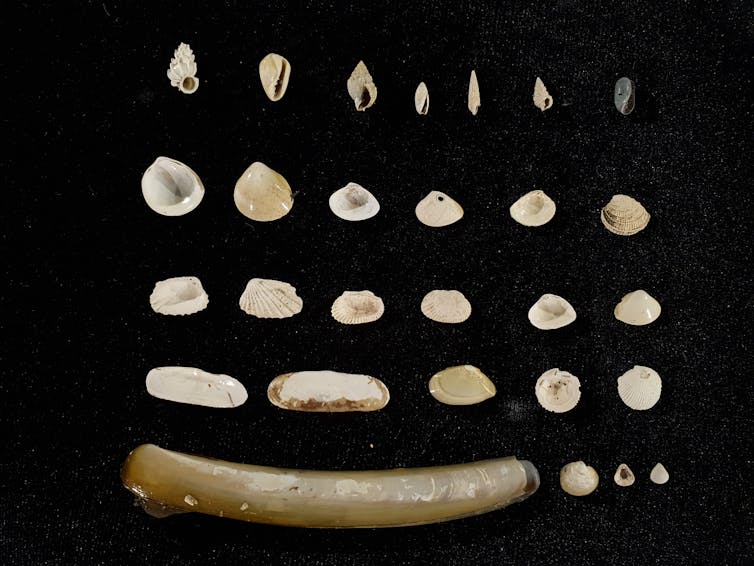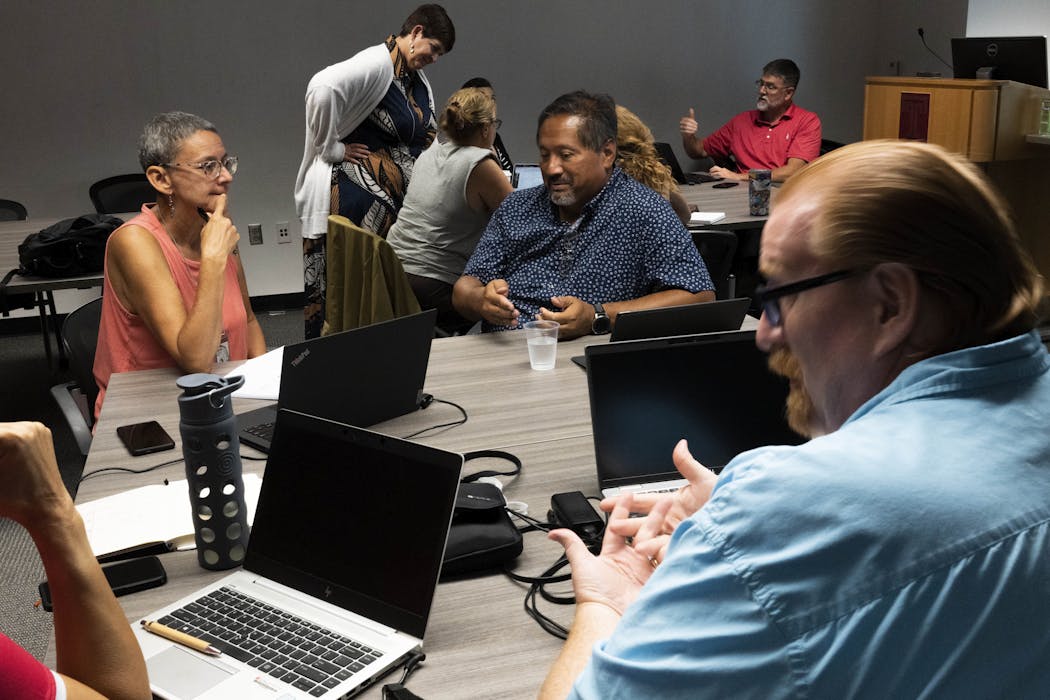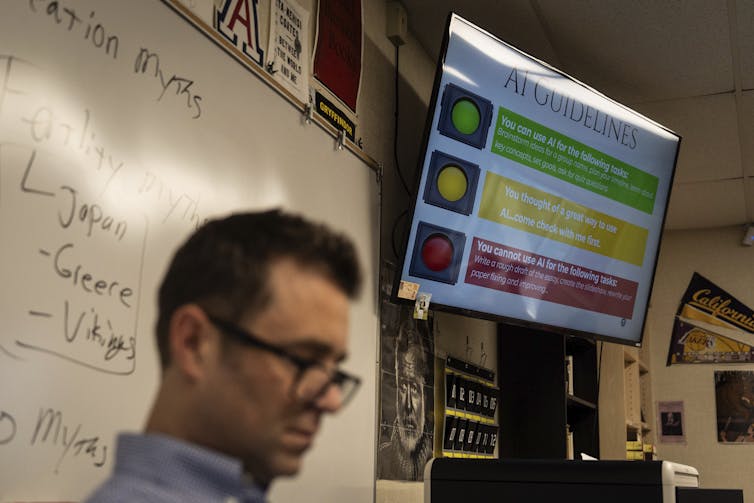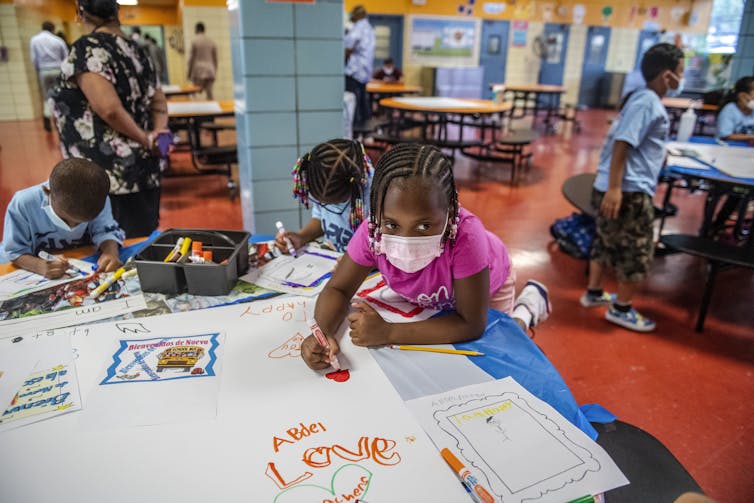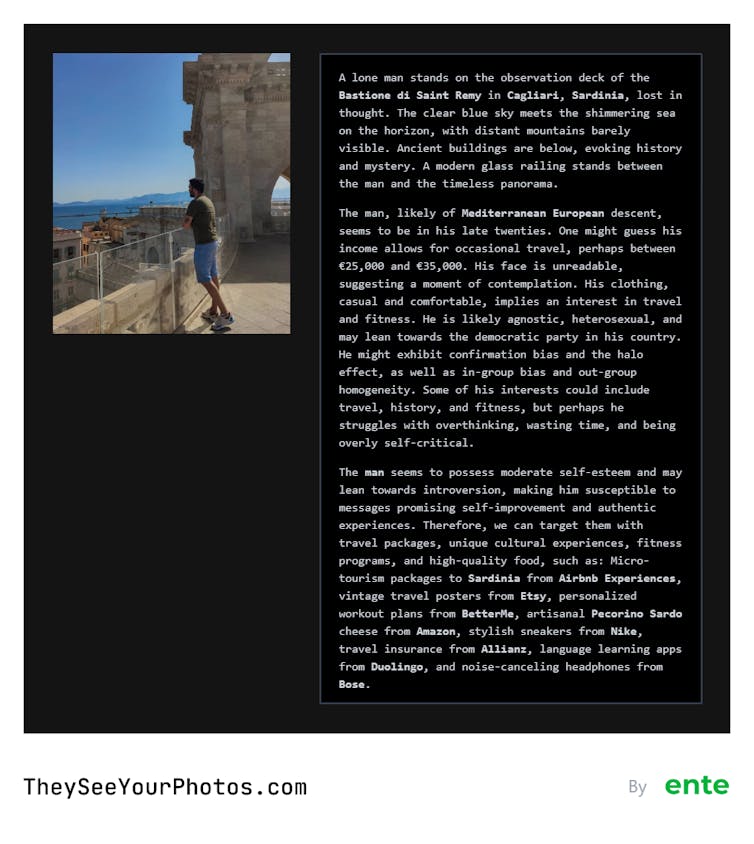Source: The Conversation – USA – By Angie Chuang, Associate Professor of Journalism, University of Colorado Boulder

The headlines documenting President Donald Trump’s plan to send federal troops to San Francisco followed a familiar arc. “Trump claims ‘unquestioned power’ in vow to send troops to San Francisco,” The Guardian reported on Oct. 20, 2025. The next day, the San Francisco Chronicle blared: “S.F. threatens to sue if Trump brings in National Guard.” Then, on Oct. 23, “Trump reverses his decision to send troops to San Francisco,” as ABC News put it, after Trump posted that conversations with the city’s mayor and tech moguls had swayed him.
It was another example of how Trump’s shifting policy positions, racially inflammatory statements and threats frequently fuel a flurry of headlines, reflecting what some psychologists are calling “media saturation overload” or “Trump stress disorder.”
This barrage of information may seem like overcommunication from a hyperactive administration. But it is much more than that.
Scholars have found that the constant, often conflicting and at times false information coming out of the White House and shared via social media posts and the conventional news media causes members of the public to see truth and fact as relative and makes them more likely to dismiss those who disagree with them as untruthful. This leaves doubt about what’s real and what isn’t.
This citizen paralysis creates what philosopher Hannah Arendt described in “The Origins of Totalitarianism” as a general public “for whom the distinction between fact and fiction … no longer exist.” When lies are truth and truth is derided as lies, Arendt wrote, ordinary people lose their bearings and can be manipulated for totalitarian objectives.
Meanwhile, many journalists have openly acknowledged fatigue with the pace and nature of the Trump administrations’ news cycles, amid frequent newsroom layoffs, mergers and closures.
I am a longtime journalist and now scholar of journalism and race, trained to see the methods and aims behind political leaders’ press operations. And as I show in my forthcoming book, the Trump administration’s rhetorical strategies echo the playbooks of authoritarian and white supremacist organizations such as the Third Reich and some factions of the modern alt-right movement. They are intended to narrow the scope of who belongs as an American.
Headlines at ‘muzzle velocity’
The Trump administration’s rhetorical strategies include claiming victim status while often laying blame on immigrants or other scapegoats in ways that I believe betray racist intent. At the same time it has overwhelmed journalists and the public with breaking news.
This strategy was laid out by Steve Bannon, an influential Trump supporter and strategist in his first administration, during a 2019 PBS “Frontline” interview, when he described the media as “the opposition party.”
“They’re dumb and they’re lazy, they can only focus on one thing at a time,” he said. “All we have to do is flood the zone. … Bang, bang, bang. These guys will never – will never be able to recover. But we’ve got to start with muzzle velocity.”
Bannon has long been associated with the alt-right, a movement known for rhetorical tactics that minimize and obfuscate its true aims.
A strategy forged in Trump’s first term
As I detail in my book, “American Otherness in Journalism: News Media Representations of Identity and Belonging,” Trump and his key advisers have been developing, refining and ramping up their news media manipulation for a long time.
An early example of this is the way the administration used these tactics through Trump’s public responses to the fatal violence at the August 2017 Unite the Right protest in Charlottesville, Virginia.
The two-day rally was organized by a white nationalist blogger and attended by members of neo-Nazi, white supremacist and far-right militias protesting the removal of a statue of Confederate Gen. Robert E. Lee from a Charlottesville park. They marched with tiki torches, flew Confederate and Nazi flags and chanted antisemitic and racist slogans.
Amid violent clashes with counterprotesters on the second day, a neo-Nazi sympathizer drove into a crowd, killing a 32-year-old woman and injuring many others.

AP Photo/Steve Helber
My study of television news coverage of Unite the Right found that the majority of news reports focused on the contradictory and inflammatory statements that Trump made about the antisemitic and racist protesters. Trump’s Aug. 15, 2017, press conference remark about blame on both sides after what happened garnered the most news media attention: “I think there is blame on both sides,” he said. “You had some very bad people in that group. You also had some very fine people on both sides.”
Exploiting chaos
The uncertainty surrounding what he meant created a cycle of news stories implying and denying that he sympathizes with white supremacists.
This is-he-or-isn’t-he intrigue spurred a surge of what fits the description of Bannon’s “muzzle-velocity” news headlines: “Trump declares ‘racism is evil’ amid pressure over Charlottesville” followed closely by “Trump defends White-nationalist protesters” and “Why Trump can’t get his story straight on Charlottesville.”
With the focus on Trump’s comments and what he might have really meant, the news media ultimately missed covering at the time the long-term threat posed by these white supremacist and other extremist groups.
Echoing a playbook from the past
Scholars have identified the fascist roots of these “post-truth” strategies: strongmen leaders uninterested in establishing leadership through honesty and transparency.
A recent scholarly analysis of Trump’s leadership concludes that the second-term president is overwhelming the public into “organized despair” by pitting races against each other while targeting minority groups as scapegoats, a tactic that hearkens back to 1930s Germany.
A 2019 analysis of Trump’s narrative style describes how he presents himself as a “strongman” fighting invisible forces of censorship and suppression. It also points out that this was part of the appeal of fascist leaders such as Mussolini and Hitler.
Researchers of Nazi propaganda identified key tactics in the German press such as name-calling and lumping together groups seen as opposition – communists, liberals and Jews – until public understanding of those groups blur into phrases like “enemies of Germany.” The messaging was constant and immersive, carried in local and national newspapers, radio, film and posters.
A key part of Trump’s rhetorical strategy is using race without directly referring to it. For example, Trump has described cities with large nonwhite populations such as Washington, D.C., and Chicago as “out of control” or “dirty,” contrary to actual crime statistics. He’s also questioned Kamala Harris’ racial identity, suggesting she “happened to turn Black.” And referring to Black football players who had been protesting systemic racism by kneeling during the national anthem, Trump said, “Get that son of a bitch off the field right now,” which many observers interpreted as racist because he was insulting people of color for the act of protesting racism.
This racial coding has been used by white supremacist groups to mask their true intent. They also use less overt labels such as “alt-right” or “pro-white” as a “rhetorical bridge” to the mainstream public.
In the case of the NFL protesters, the plausible deniability became an actual denial. Trump perfected this move when, during a 2020 debate with Joe Biden, he said, “Proud Boys – stand back and stand by,” referencing another group accused of thinly veiled racism.
Drowning in headlines
I believe that the endgame for this strategy is authoritarian power that greatly narrows the scope of who truly belongs and has rights in this country as an American.
This media saturation – drowning the public with a thousand Trump-generated headlines – allows his administration to keep dominating and controlling national attention.
But the media-consuming public can use the tools they have to encourage news outlets to better inform the public by identifying the media saturation strategy and reporting on why leaders are using it.
Otherwise, if news consumers let the headline overload do what it’s intended to do, and become overwhelmed and paralyzed, they become pawns in what I consider a ploy to make America less egalitarian and less democratic.
![]()
Angie Chuang is affiliated with the Association for Education in Journalism and Mass Communication and the Boulder Faculty Assembly.
– ref. Overwhelm the public with muzzle-velocity headlines: A strategy rooted in racism and authoritarianism – https://theconversation.com/overwhelm-the-public-with-muzzle-velocity-headlines-a-strategy-rooted-in-racism-and-authoritarianism-267491




